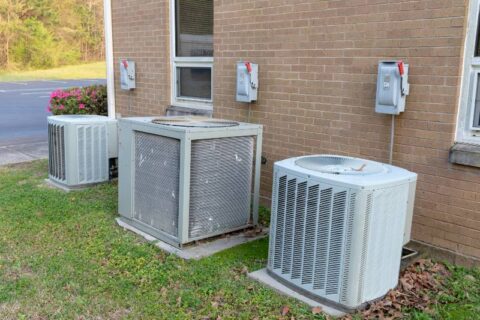HVAC Efficiency Standards are Changing in 2023
The energy efficiency requirements for residential heating and cooling equipment will take a big step forward in 2023. Starting January 1, new minimum efficiency standards will take effect for central air conditioners and heat pumps. These changes are part of the Department of Energy’s (DOE) continued efforts to reduce energy consumption and pollution in the United States.
Increasing HVAC standards is a step in the right direction, but you may have questions about these changes if you plan to replace your heating and cooling system soon. Here’s what you need to know.
New HVAC Efficiency Standards
An air conditioner’s seasonal energy efficiency ratio, or SEER, describes how effectively the cooling system removes heat from your home. The efficiency standard for residential AC units in the northern half of the US, including Utah, is changing from 13 SEER to 14 SEER. Likewise, the requirement in the South will increase from 14 SEER to 15 SEER. This represents a 7 to 8 percent efficiency increase across all fronts.
Heat pumps must also meet new efficiency standards in 2023. Unlike air conditioners, one standard applies to the entire country. The cooling efficiency standard is increasing from 14 SEER to 15 SEER nationwide. Heat pumps also provide wintertime heating, with efficiency indicated by the heating seasonal performance factor (HSPF). This standard will increase from 8.2 HSPF to 8.8 HSPF.
Note that the new HVAC 2023 requirements only apply to newly installed systems. Existing equipment does not need to be replaced as part of this regulation change.
SEER vs. SEER2
You may also notice new labels appearing on HVAC equipment next year, with “SEER2” and “HSPF 2” listed as the efficiency ratings. This is the result of new HVAC testing procedures. The goal is to more accurately reflect field conditions during testing, and the new labels coincide with improved testing metrics.
Due to more stringent procedures, efficiency ratings with a “2” after them seem lower, even though they reflect the same performance. For example, Utah’s 14 SEER minimum for air conditioners is equal to 13.4 SEER2. And the nation’s 8.8 HSPF minimum for heat pumps is the same as 7.5 HSPF2.
New Refrigerants
The last significant change coming in 2023 involves refrigerant in new air conditioners and heat pumps. The current standard, R-410A (brand name Puron), has been the preferred alternative to ozone-depleting R-22 (brand name Freon) since 2010. Freon was completely phased out in 2020.
Puron is now being replaced with another alternative that has a lower global warming potential, known as R-454B (brand names Puron Advance, Opteon XL41, and Solstice 454B). Puron supplies will remain available to repair existing equipment, but no new HVAC systems will contain this refrigerant starting in 2023.
Do you still have questions about the changing HVAC efficiency standards? Look to Parley’s PPM Plumbing, Heating & Cooling. We have over 40 years of experience, so you can trust our knowledgeable team to address your concerns. For more information, please contact us online, call us at 801-226-3033 if you live in Utah County, or reach us at 801-229-2665 if you’re a Salt Lake County resident.


